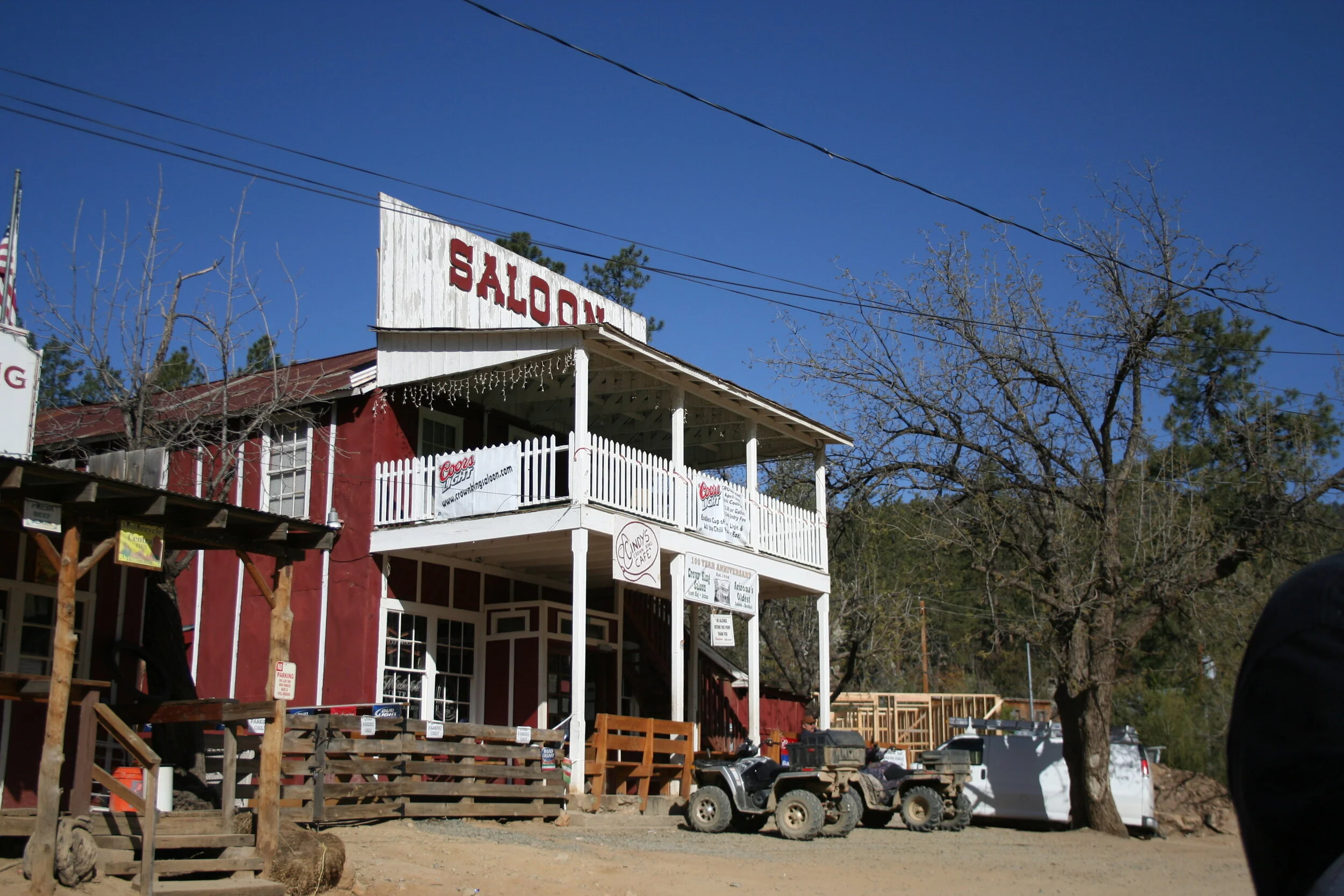Yavapai County
Crown King
Named after the Crowned King Mine, this touristy town was once full of railroad and mining activity
The Crowned King Mine was the largest mine in the Bradshaw’s. Over the years, the name was shortened to Crown King, and used for the name of the nearby community. On July, 1 1875, Rod McKinnon filed the first claim called the Buckeye. For more information on the Crowned King Mine, see our history page on the Crowned King Mine (coming soon).
After serving as county supervisor in Prescott, George Harrington returned to Crown King. He settled in the north end of the town near the mine itself. The Harrington Family and Jack Nelson, who was married to George’s daughter, established the Nelson Mining Company which operated the Philadelphia Mine. A narrow gauge railroad was constructed between the Main Crown King Railroad and the Philadelphia Mine. Ore cars were now able to dump ore directly into the
Bradshaw Mountain Railroad. A tent and a shed were built as part of the mining company. A house was moved in 1914 to the Wildflower Mine (which was close by) and was used as a bunkhouse. This later became a cookhouse and was called the “Buzzard’s Roost”. Jack Nelson, who was the deputy sheriff of Crown King, played an important role in the Nelson Mining Company. However, he was injured in a mining accident in which he never fully recovered.
George Harrington also played a very important role in the establishment of Crown King. He donated land and money to establish the Crown King School and the church in downtown. The schoolhouse, which was previously held in a boardinghouse since 1894, was opened in 1917. Being one of the most influential and respected man in Crown King, Harrington was dearly missed when died in 1922.
Old Crown King, which was built in 1904 in the flat part of the Bradshaw Basin, began to slow down. Business’ were shut down. However, the town came back to life when the railroad arrived. But, a fire ruined most of old Crown King. Fortunately, the men saved the most important building, the saloon.Near the new railroad depot, a general store was erected. This signifies the move of the towns location to its current spot. Right behind the general store, “Doc” Tyler built his Granite Saloon. The railroad build many buildings in Crown King which many of are still used today.
Tom Anderson, who moved from Tennessee to Arizona in 1897, started off as a miner in the Crowned King Mine. He later went on to move the saloon from Oro Belle to its current place in downtown Crown King. He did this in 1916 piece by piece. On April 11, 1950, a cigarette was dropped by a paint can which sparked a fire that burned the houses and cabins of “Ma” Reed (who was always arguing with Tom Anderson over property lines) and the church. The general store was barely saved.
Another important figure in the history of Crown King was the Van Tilborgs. They were cattle ranchers that owned a large amount of property in Crown King. Their ranch house was known as Spud Ranch and was on Tower’s Mountain. This family owned the General Store for many years. Two of the Van Tilborgs, Don and Grant, worked on the ranch but also worked hard as miners. They worked in the Swastika Mine as well as the Golden Turkey Mine (located along Turkey Creek). One thing that Grant was known for was his very old cash register. In fact, it still can be seen inside of the General Store.
Mining in Crown King slowly withered off but became booming again during the World Wars. However, as fires and changes in the Crown King Ranger District caused the town to die off. Its main source of income is from tourism, which is actually booming. Another benefit for Crown King was the Construction of the Horsethief Basin Recreation area in 1934 by the Civilian Conservation Corps.
Crown King today is considered a living ghost town. It is a great place to check out and as you have read, has a lot of history behind it.
Sources:
Wilson, Bruce M. Crown King and the Southern Bradshaws: A Complete History. Chandler, AZ: Crown King Press, 2002. Print.

